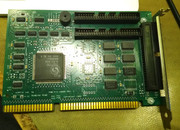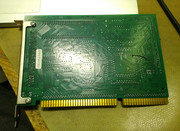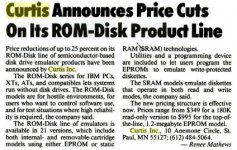MindWalker
Experienced Member
Hello.
Included in a local auction with couple misc. ISA boards, I got this mystery board, see photos below (sorry for the potato-quality).
Can anyone shed any light on what it might be? My google-fu failed me and I can't find any leads on this.
My google-fu failed me and I can't find any leads on this.
The board says: "CURTIS INC. TM ROMDISK PCM2 PWB P/N C8000 Rev. C Copyright 1993". Sticker on the back reads "CS202068". The main IC is "Symphony SL82C365G", there are two 50-pin male headers and a high-density male header on the rear. And a beeper!
The 50-pin headers make me think of SCSI, could this be some kind of SCSI controller and/or cache? Or by the name 'ROMDISK' - a software lock for a disk to make it read-only, perhaps?
I haven't been able to test this in a computer yet!



Included in a local auction with couple misc. ISA boards, I got this mystery board, see photos below (sorry for the potato-quality).
Can anyone shed any light on what it might be?
The board says: "CURTIS INC. TM ROMDISK PCM2 PWB P/N C8000 Rev. C Copyright 1993". Sticker on the back reads "CS202068". The main IC is "Symphony SL82C365G", there are two 50-pin male headers and a high-density male header on the rear. And a beeper!
The 50-pin headers make me think of SCSI, could this be some kind of SCSI controller and/or cache? Or by the name 'ROMDISK' - a software lock for a disk to make it read-only, perhaps?
I haven't been able to test this in a computer yet!




